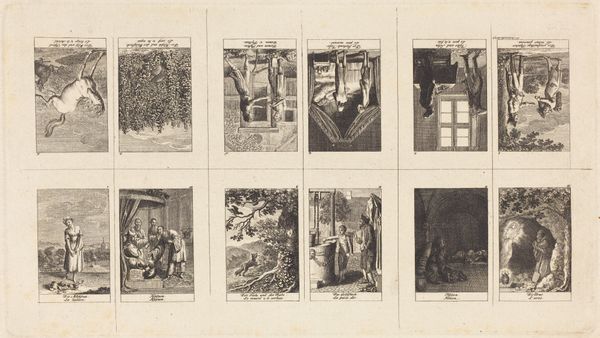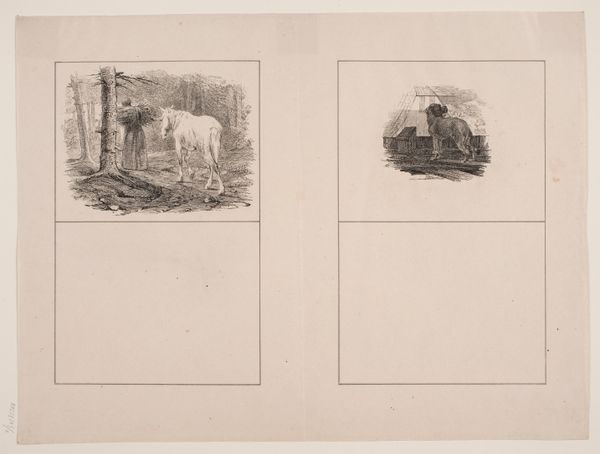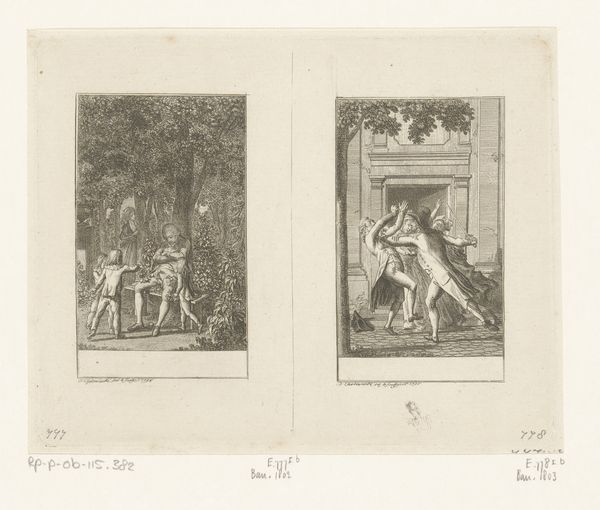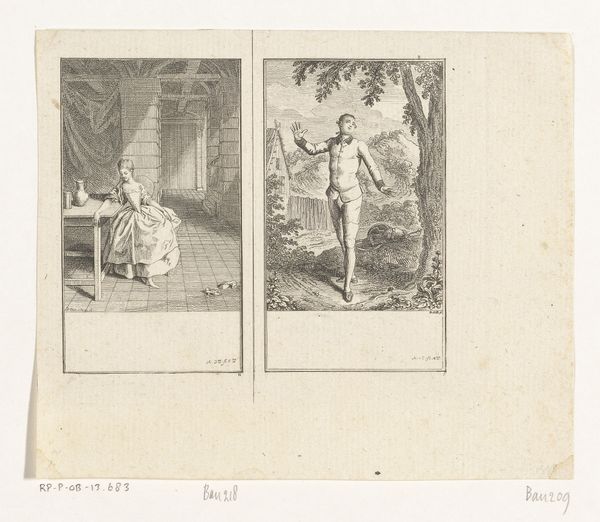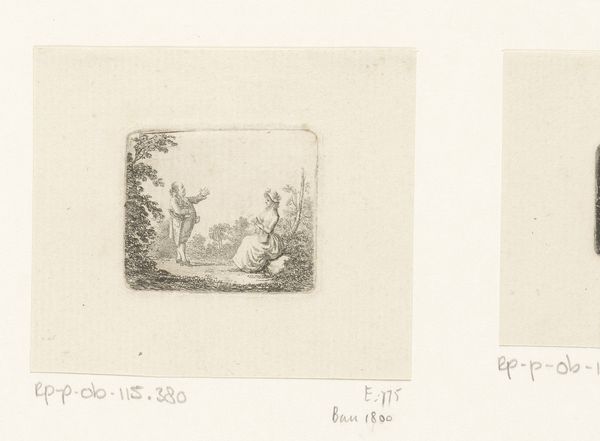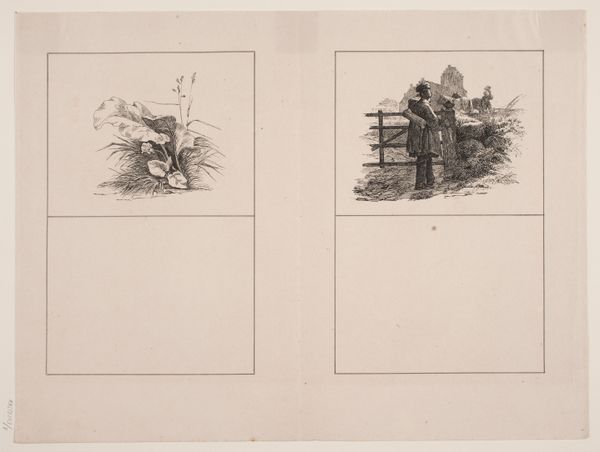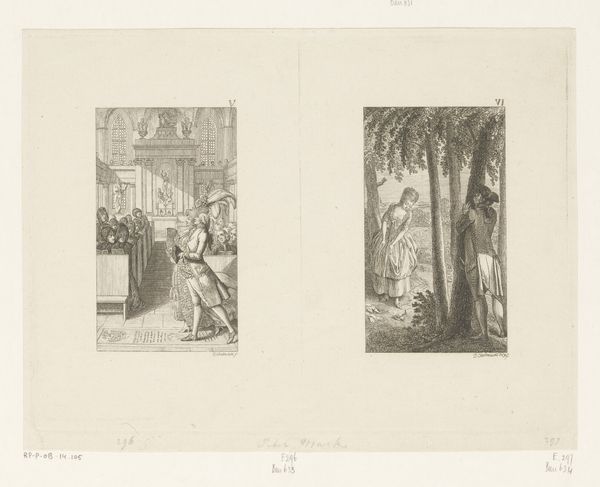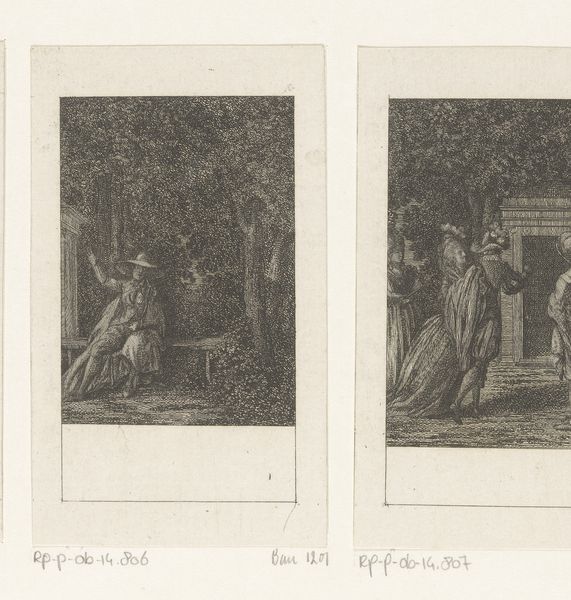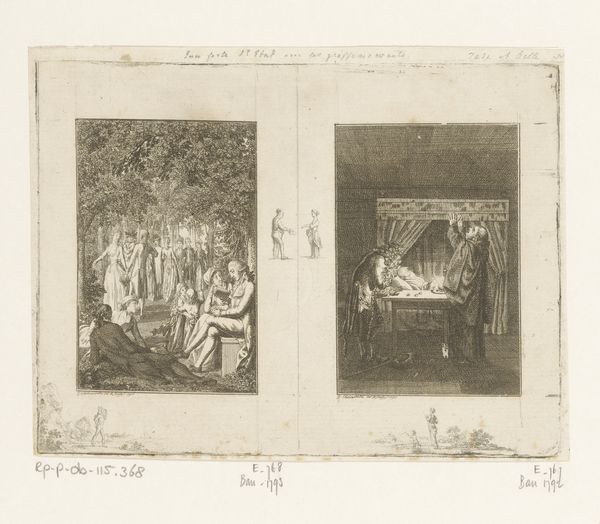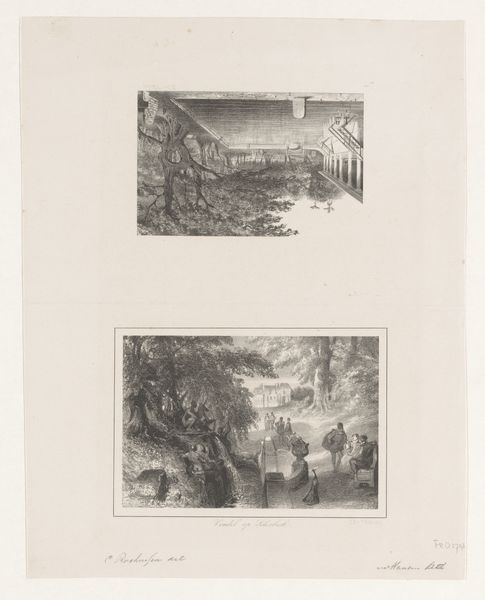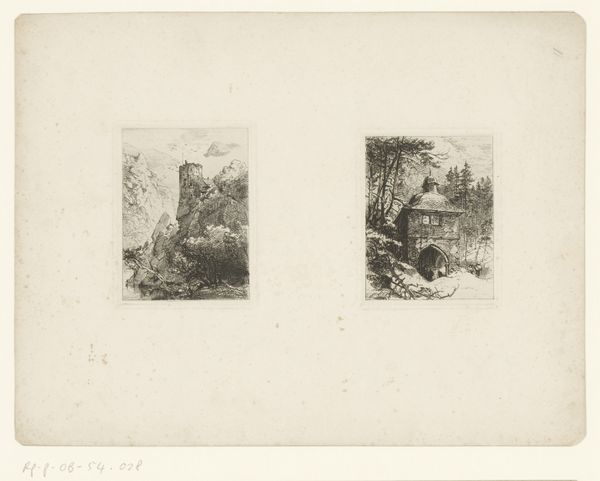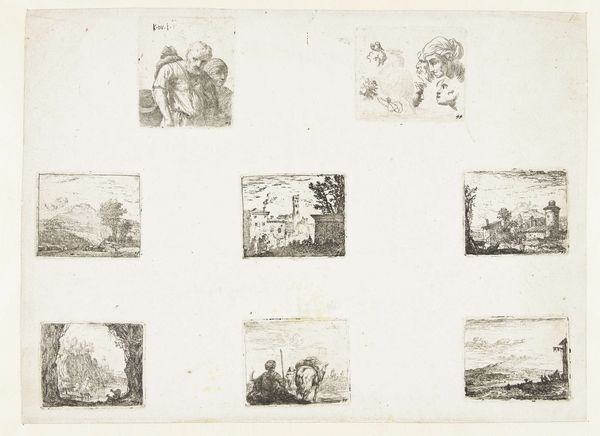
Zes voorstellingen bij de korte gedichten van Ludwig Hölty 1793
0:00
0:00
drawing, print, pen, engraving
#
drawing
#
narrative-art
# print
#
pencil sketch
#
romanticism
#
pen-ink sketch
#
pen
#
history-painting
#
engraving
Dimensions: height 82 mm, width 278 mm
Copyright: Rijks Museum: Open Domain
Curator: This is "Zes voorstellingen bij de korte gedichten van Ludwig Hölty," created by Daniel Nikolaus Chodowiecki in 1793. It's currently held at the Rijksmuseum, a work rendered in pen, ink, and engraving. Editor: My first impression is one of constrained narrative. Each vignette, a tiny stage setting; the tight composition conveying a kind of repressed emotion, don’t you think? Curator: Absolutely, and considering Hölty’s poetry, known for its exploration of love, nature, and particularly loss and mourning, the restrained quality enhances the impact of such sensitive themes. The sequential nature mirrors the unfolding of a narrative poem. Editor: The artist's choice of engraving really lends itself to capturing fine detail. The clear, sharp lines create a starkness and, at the same time, a rather luminous contrast, guiding the viewer's eye panel to panel. The architectural structures and tree branches display detailed and consistent strokes. Curator: Indeed. The Romantic style emphasized emotional intensity and individualism. Note how Chodowiecki's illustration might amplify feelings connected to the social and political context of his time. The scenes are less focused on grand historical events, more centered on the personal impact of those moments. Editor: Semiotically speaking, each panel is loaded. The trees could represent life cycles, the enclosed spaces feelings of isolation. Consider the positioning of the characters in each section—their body language speaks volumes about internal turmoil. Curator: Exactly! The choice to visually represent Hölty’s poems serves as a cultural artifact. It’s the dialogue between literature and visual art. How different artistic languages might evoke and interpret grief, love, and contemplation. The engravings become a site where societal and personal anxieties intertwine. Editor: What a successful attempt to capture the quiet intensity of the original verse through form and visual storytelling! Curator: Absolutely. It gives me a great understanding of how people from the Romantic period processed some complex themes.
Comments
No comments
Be the first to comment and join the conversation on the ultimate creative platform.
